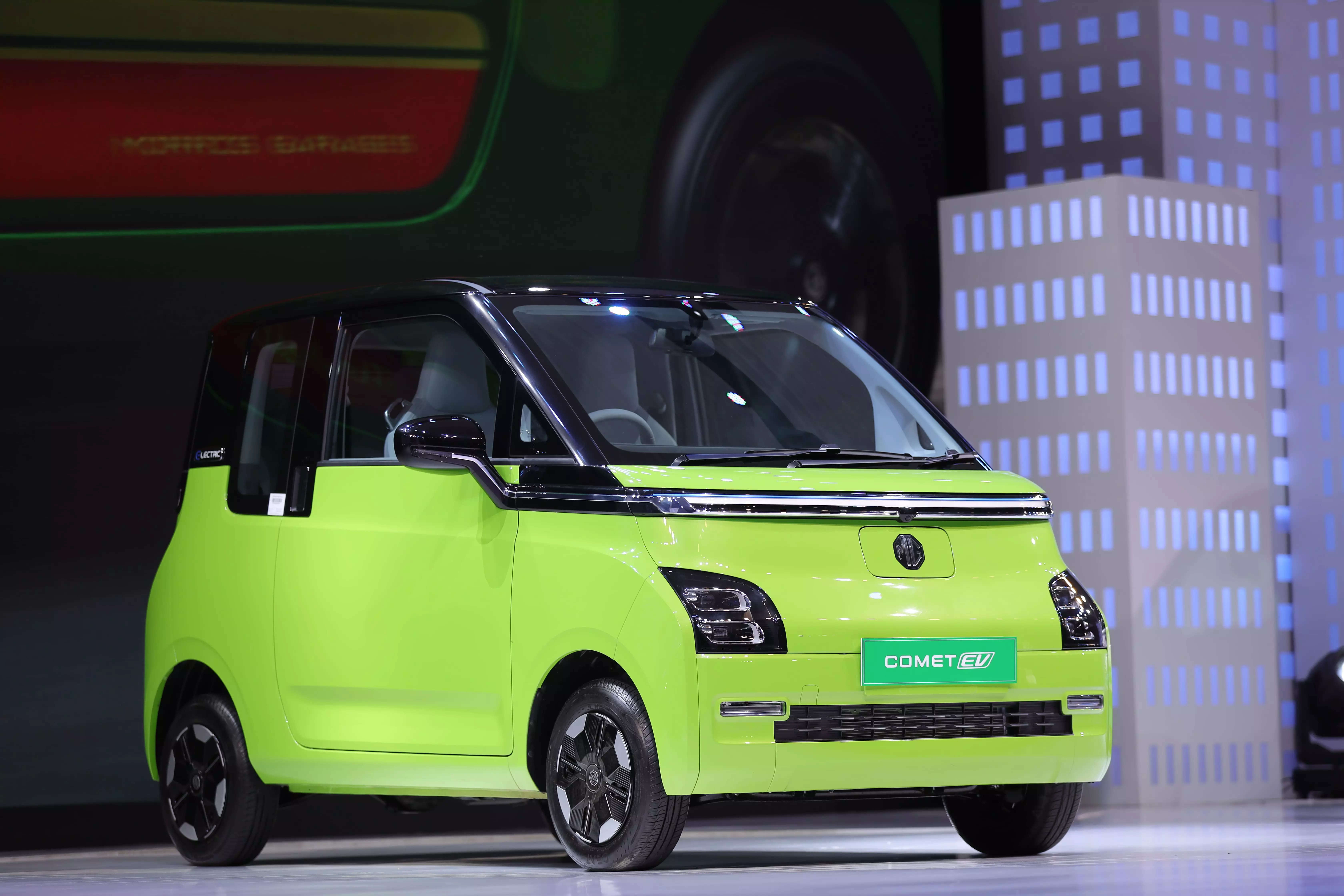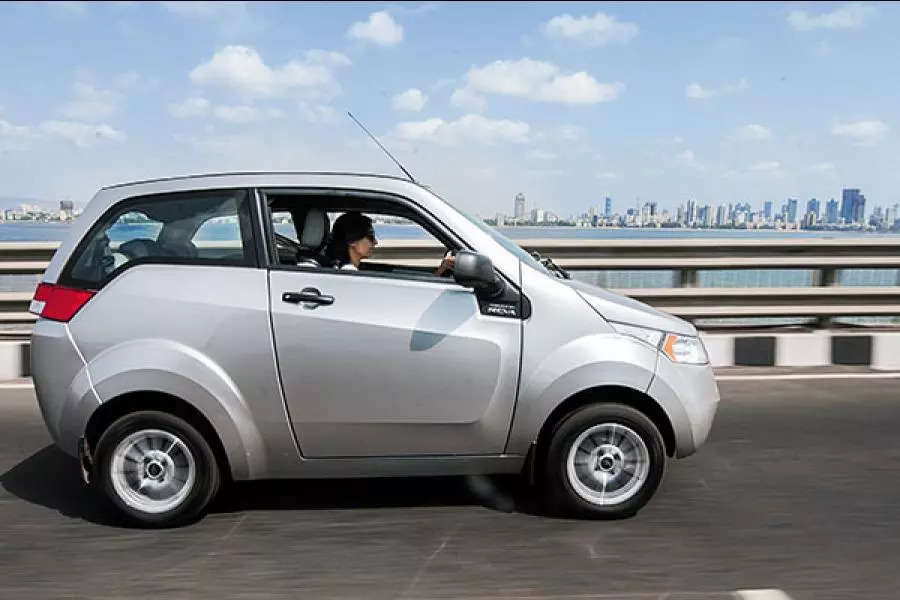New Delhi: Even though it may not be best suited to everyone, it is a good solution when the country is transitioning towards electric vehicles (EVs), says Rajeev Chaba, President & Managing Director, MG Motor India about its new two-door gadget car, the Comet EV.
Chaba is talking about a sub-3 meter feature loaded four-seater configuration electric car in a market where almost all the mass segment OEMs have pulled a plug on their entry-level hatchbacks and over two dozen SUVs have been launched in the past two years.
“You may like it or you may hate it, but you cannot miss noticing it on the road,” he says, while clearly defining that the Comet is not a typical family car for 4-5 people. It is not even suitable for someone who wants to drive at 80-90 km speed, or even someone who would want to make frequent outstation trips.
The potential customers for Comet EV are the Gen Z, old couples, young moms, or basically two people who have some luggage. This will also serve as a practical solution to people who buy it as their second or third car in the family, Chaba said.
As of today, India does not sell any two-door sub-3 meter electric cars. So there is no direct competition to Comet. However, there are two more models in the market, which are electric and priced in the lower end of the bracket- Tata Tiago EV and Citroen eC3.
“This is a welcoming development by MG. The Comet EV can make a niche segment of its own. If a customer is an entry-level car buyer, his mobility needs are defined, the charging infrastructure is sorted for short distances, and he likes the packaging of the vehicle, it is a perfect choice,” Ravi Bhatia, President of market research agency JATO Dynamics, said.
“Even in the two-wheeler segment, EV penetration has increased because of inverted price attractiveness. With more options available at lower price points, the entry-level EV segment is expected to grow,” he said.
Niranjan N Prabhu, CEO, Cargraphical Analytics also believes that the Comet EV has the potential to build a niche for itself. “It will not garner great volumes, but there is definitely a market for such a car.”
MG Motor launched the car at an introductory ex-showroom price of INR 7.89 lakh. “The quality of this car’s interiors is as good as any luxury car. It is not a cheap car,” it said.
The car comes powered with a 17.3 kWh Li-ion battery with Prismatic Cells and a ARAI certified range of 230 km. MG is expected to introduce more variants of Comet EV with same range but different connected features.
According to Avik Chattopadhyay, Co-Creator of Expereal India, the micro-urban vehicles work in either very mature markets or those with large vehicle penetration. In the first case, they are owned by the ultra-rich as an additional vehicle that they use within the city where there are issues of congestion and fines for the same. In the second case, they become the first four-wheeler for a family moving up from a two-wheeler, as has happened in China since 2000 or had happened in Europe post World War-2 which saw the birth of the Mini and 500.
“In a market like India, with a very low vehicle penetration, a micro-urban vehicle will work on a price point. And that is the space that Maruti Suzuki has been catering to for all these years. The Alto is a perfect example. A new electric micro-urban vehicle, unless at a very attractive price point, will not be sustainable,” he said.
Gaurav Vangaal, Associate Director, LV Forecasting, S&P Global Mobility also believes that the Indian buyers are highly value conscious. “Since there is no direct competition to Comet EV, in value terms customers may compare it to the Tiago EV which is just INR 70,000 higher in price point. So they may look for the next affordable EV available, which is also a four-door car.”
Pricing is the key
An industry veteran said that while the market is transitioning towards electric mobility and technology-rich, safer vehicles, Comet may also draw potential customers of an Alto K10, which is currently the most affordable entry-level hatchback available in the ICE vehicle market at ex-showroom price of INR 4 lakh.
According to Bhatia, two things are important for a model to be successful- pricing and packaging. “Within the entry-level EV segment, the Comet EV is competitively priced. As for packaging, the market needs to wait and watch based on consumer interest,” he said.
Talking on similar lines, Prabhu stated that currently, about 50% cars sold in India are over INR 10 lakh price point. So INR 8 lakh should not prevent people from opting for the Comet EV. “The Comet EV seems decently priced. The Tiago at a premium of INR 70,000 more than the Comet is for the base variant and misses on a lot of features.”
While he seems positive about the new model, the only thing he feels that may impact the consumer interest is “if at all, the customers face poor quality issues with the product. That needs to wait and watch, because a word of mouth spreads fast.”
On the contrary, Vangaal said, “This is an expensive car. Its price indicates that it is intended to be a smart, lifestyle electric vehicle, rather than a mass market mobility vehicle.”
Until now, all the EV models have been getting a positive response in the country at every price point. The Indian market has also evolved over the past years and it is maturing to move towards the C-segment, but MG is trying to create a new category in the A-segment market. So this product will test the waters, he said.
Chattopadhyay also feels that at this price point, the Comet EV is uncompetitive in its current two-door avatar either with Alto or Tiago EV. “Sadly, it will not be able to make a mark in the personal vehicle space unless the price point is drastically brought down. A conventional and larger four-door Tata Tiago costs just INR 70,000 more,” he stated.
Will MG pull it off, or the history will repeat itself?
Back in 1994, a Bangalore-based electric car company Reva was founded. It was a joint venture between the Maini Group and the Amerigon Electric Vehicle Technologies (AEV) LLC based in United States. In 2010, Mahindra & Mahindra acquired a controlling stake in this company. Following this, Reva Electric Car Company was renamed Mahindra REVA Electric Vehicle Co Ltd. After owing Reva, the automaker launched the two-door e20 in 2013 at INR 5.96 lakh. Amid flagging sales, the model was eventually discontinued in 2016. it later launched the four-door e20 Plus, production for which was also stopped within three years.
A decade after the first electric car launch, Prabhu said, “It (Comet EV) is a bold step by MG as they are creating a new market. But it is also a critical step, because the automotive industry is such that if one model fails, it can topple your image with the consumers.”
He expects that the Comet EV has the potential to garner 1000-2000 unit sales per month, mainly in the urban cities. “I would be surprised if it clocks more, but I do not see the model failing altogether,” he said.
MG, which is targeting 30% of its total sales to be EVs by the end of this year, has planned a production of 3000 Comet EVs a month, depending on the consumer demand.
The autoamker, which entered the Indian market in 2019, currently sells four models in the country- Hector, Astor, Gloster and the ZS EV. With the Comet, the carmaker said it has intended to ‘take a leap of faith to create solutions for a better future.’
New doors of market potential
The Comet EV will clearly have to carry the pressure to perform on its shoulders. However, if it gains volumes and finds its place with the Indian consumers, it shall be marked as a harbinger of a futuristic product in urban mobility.
As for now, MG is targeting it towards personal mobility. However, Chattopadhyay feels that given its constraint of only two doors, the Comet might find application in the institutional space at airports, industrial complexes etc. where they accept a two-door over a four-door vehicle.
MG said that while currently it has no plans to sell the model in the fleet segment, it is open to exploring newer domains.
Probably in a few months time the industry will be able to gauge if MG’s innovative and bold step has the potential to create a space for the future of urban mobility in India.


















